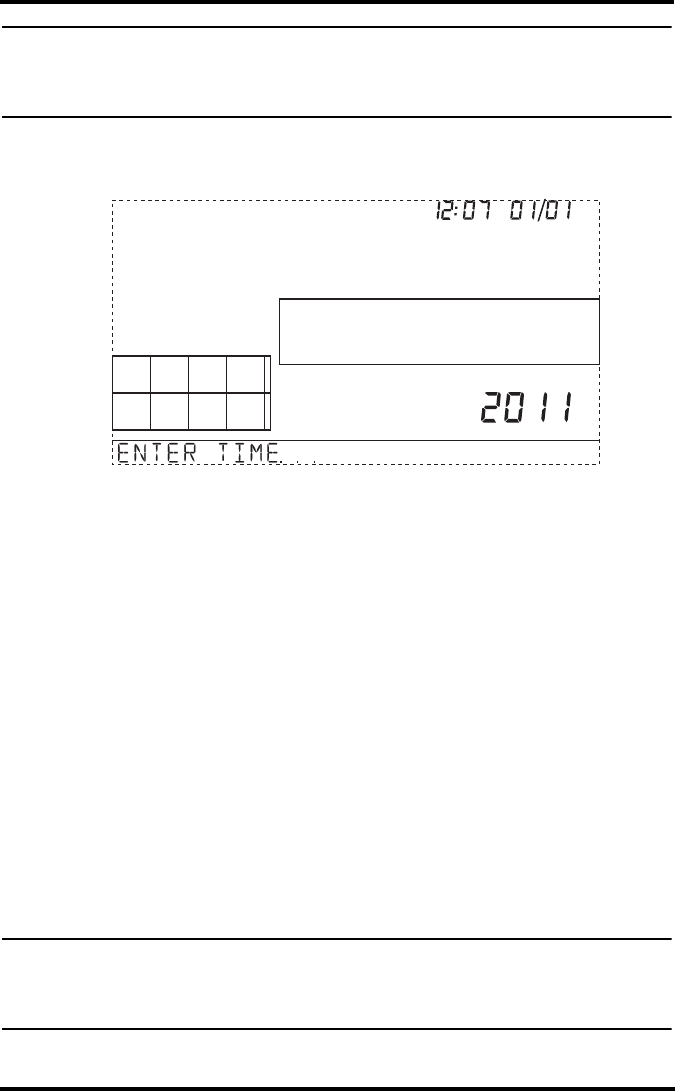
Setup Mode
12
Note: Make a note of the ID selected for retransmit. The console that receives the data
from the console you have selected to retransmit should be configured to receive the
transmitter ID you selected. See “Screen 2: Configuring Transmitter IDs — Wireless
Only” on page 10 for more information.
Screen 4: Time & Date
The first time you power-up the console, enter the correct date and local time.
Screen 4: Time & Date
To change the time and date:
1. Press the < and > keys to select the hour, minute, month, day or year. The selected
time or date setting blinks on and off.
2. To change a setting, press the + and - keys to adjust the value up or down.
To choose a 12-hour (default in US models) or 24-hour clock (default in EU and UK
models), first select either the hour or minute setting, then press 2ND and immedi-
ately press UNITS. This toggles the clock setting between the two clock types.
To choose between a MM/DD (default in US models) or DD.MM (default in EU and
UK models) display for the date, first select either the day or month setting, then
press 2ND and immediately press UNITS. This switches the console from one date
display to the other.
3. Press DONE to move to the next screen.
Screen 5 and Screen 6: Latitude and Longitude
The console uses latitude and longitude to determine your location, allowing it to adjust
the forecast and calculate the times for sunset and sunrise.
• Latitude measures distance north or south of the equator.
• Longitude measures distance east or west of the Prime Meridian, an imaginary line
running north and south through Greenwich, England.
Note: You can find your latitude and longitude by searching the internet (for example:
googlemaps.com, earth.google.com or earthtools.org). Many atlases and maps
include latitude and longitude lines. You can also talk to the reference department of
your local library, call your local airport, or search on the Internet.
am


















